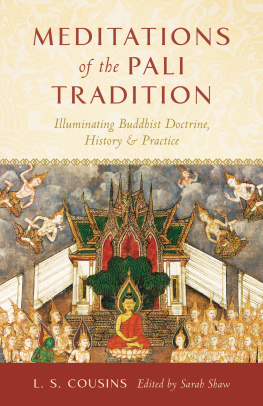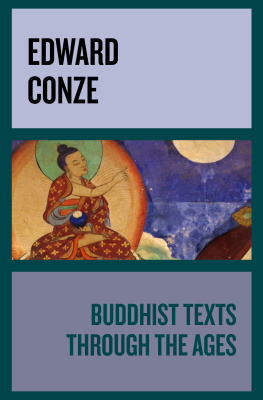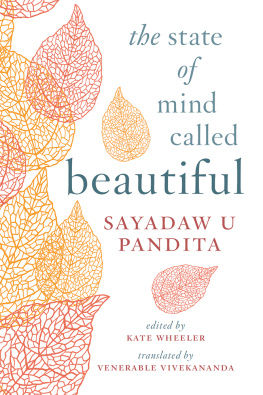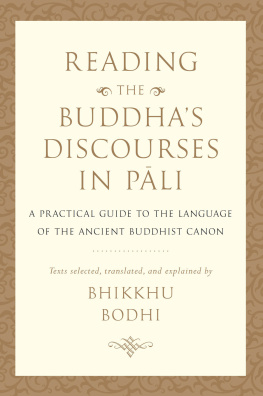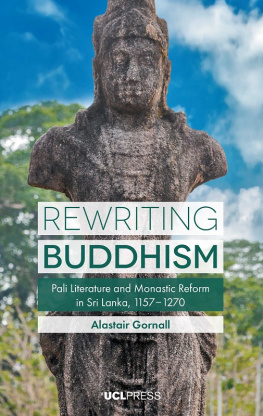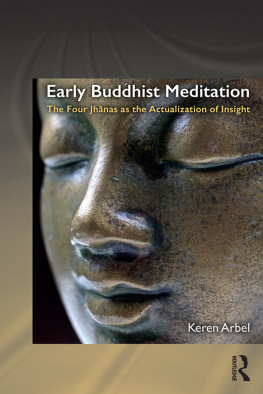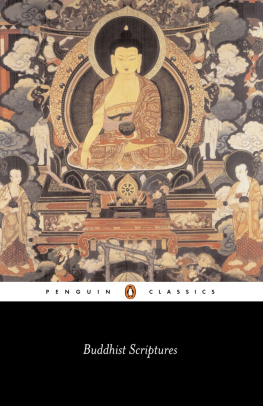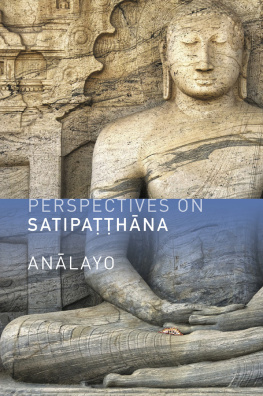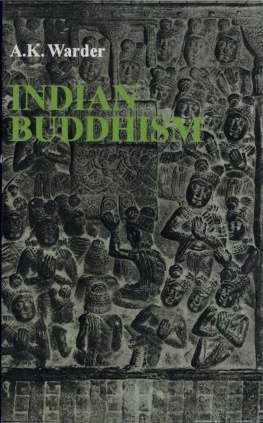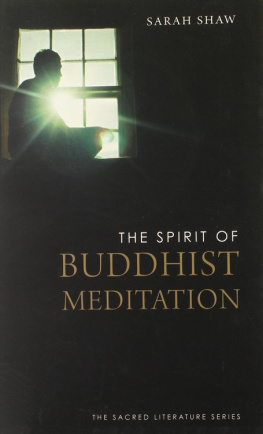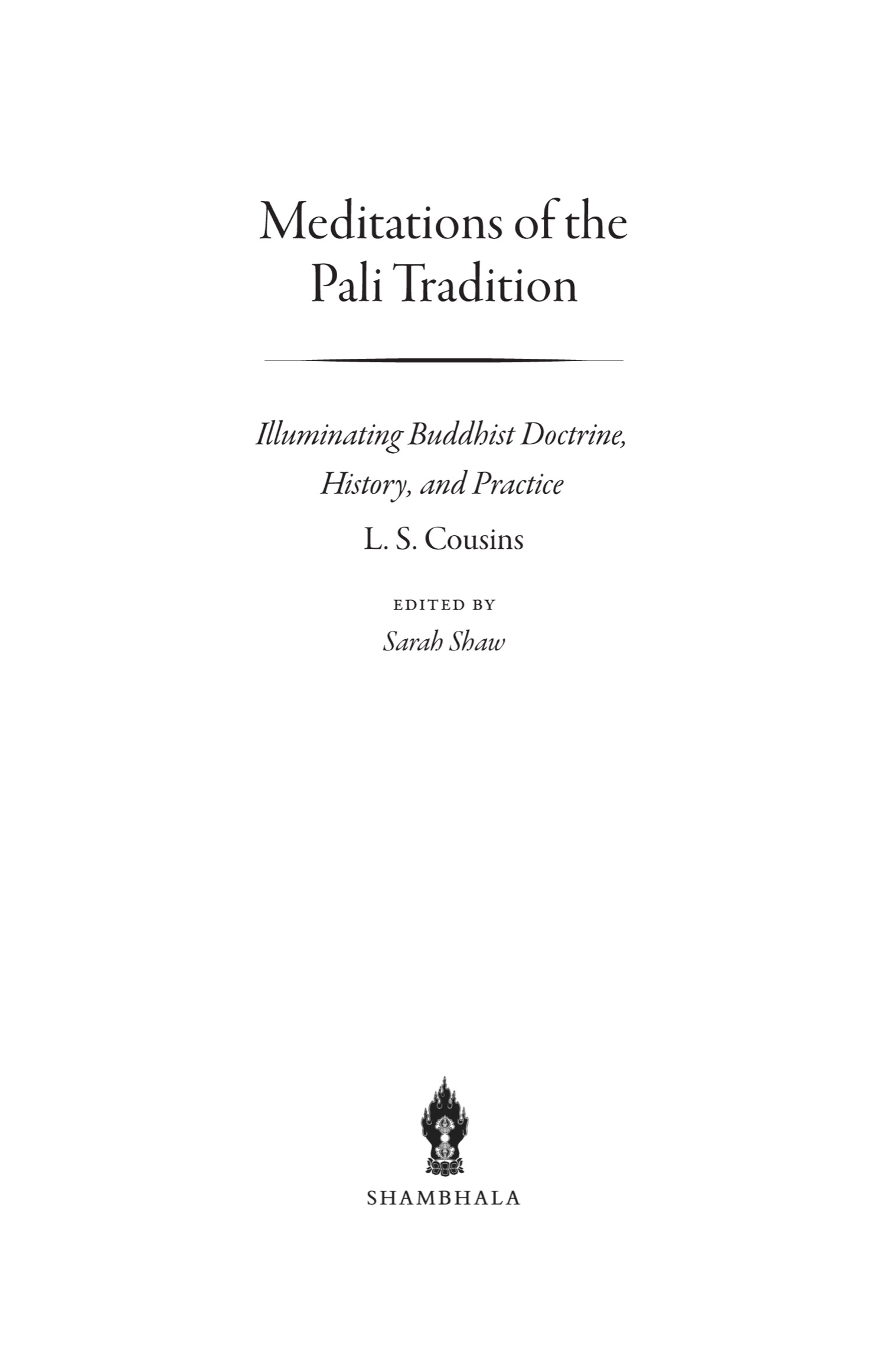Contents
Landmarks
Print Page List

Meditations of the Pali Tradition shines an incisive light on the multifaceted jewel of the meditation practices of Southern Buddhism across the ages, drawing in sidelights from related material in other early Buddhist schools and their transmissions to China. Cousins writes with deep knowledge of and informed interest in a network of meditative practices as interpreted and developed from the Pali Canon, abhidhamma, and commentaries. He explores the nature and role of the jhnas and formless attainments, their effects on feeling and perception, and how these practices concerning calm (samatha) relate to those of insight (vipassan). He addresses not only the roots and developments of modern vipassan meditation, but also the more esoteric visualization practices of the Pora meditative traditions that were sidelined by modern vipassan but are now being increasingly uncovered and explored. In an impartial and discerning way, he leads us through some of the rich intricacies of these different systems and their emphases. This illuminating work, which broadens and deepens our picture of meditation in the Southern Theravda tradition, will be of great interest both to scholars and to practitioners of these and other meditations.
Peter Harvey, cofounder of the UK Association for Buddhist Studies and author of An Introduction to Buddhism: Teachings, History, and Practices (Cambridge University Press)
Meditations of the Pali Tradition is both calming and insightful. For a forest monk, it can be painful to read the overly convoluted and contentious diatribes which are found too often in academic discourse. Cousinss book is a welcome relief from such thickets. In addition to his skill in arranging, elucidating, and reconciling disparate texts in multiple languages and from various traditions, two other qualities shine through in this work: his respect for forest specialists and his interest in the practical application of his erudition. This book provides fresh perspectives into both much-loved discourses and arcane treatises, all the while presenting them with concern, humility, and the estimable sincerity of someone who was trying to translate the Dharma into their own hearts vernacular.
Ajahn Kovilo, senior incumbent, Clear Mountain Monastery
Cousinss wide interests inspired him to delve deeply into the core questions of Buddhism, mysticism, and religious studies. His writings are the fruit of a keen and sensitive wisdom tempered by personal experience and an unparalleled knowledge of the original texts in the original languages. They offer fresh and timely insights into Buddhist thought, practice, and history.
Peter Skilling, author of Questioning the Buddha: A Selection of Twenty-Five Sutras
Shambhala Publications, Inc.
2129 13th Street
Boulder, Colorado 80302
www.shambhala.com
2022 by Randal and Halla Cousins
The text of chapter 14 is reprinted with permission from Samatha Journal.
Cover art: Victoria and Albert Museum, London and mapichai/Shutterstock.com
Cover design: Kate Huber-Parker
All rights reserved. No part of this book may be reproduced in any form or by any means, electronic or mechanical, including photocopying, recording, or by any information storage and retrieval system, without permission in writing from the publisher.
First Edition
library of congress cataloging-in-publication data
Names: Cousins, L. S., author. | Shaw, Sarah (Scholar of Buddhism) editor.
Title: Meditations of the Pali tradition: illuminating Buddhist doctrine, history, and practice / L. S. Cousins; edited by Sarah Shaw.
Description: Boulder: Shambhala, 2022. | Includes bibliographical references and index.
Identifiers: lccn 2021029932 | isbn 9781611809879 (trade paperback)
Subjects: lcsh : MeditationTheravada Buddhism.
Classification: lcc bq 7280 .C68 2022 | ddc 294.3/4432dc23
LC record available at https://lccn.loc.gov/2021029932
eISBN9780834844438
a_prh_6.0_140999374_c1_r0
Editors Introduction

Buddhist meditation has been practiced, often in private, for over two thousand years. Until the twentieth century it was still taught mostly from one person to another, frequently in confidence; it is the flower that flourishes in the shade. Those who practice meditation learn much of how to do it from other living people. We learn as we watch how they sit, or feel something about their presence, or respond to their tone of voice or silences. Because of all this, writing a history of meditation is a difficult thing: we have to reconstruct and speculate from texts and manuals. Perhaps because of the immediacy of the subject, accounts of developments in meditation have not been university subjects in the way that, for instance, the key philosophical ideas in Buddhism have. Meditation does not have the same histories and obvious continuity. So perhaps it is not that remarkable that no study of the history of Southern Buddhist meditation, to my knowledge, has been written before. What is remarkable is that the scholar who wrote this one was probably the only person who could have done so: I cannot think of one better placed. As far as I know, it is the only book of its kind.
This book is published posthumously; its author, Lance Cousins, died in 2015, after spending a lifetime immersing himself in the literature on the subject and finding out about its practices from scholars and exponents. He had spent his whole career on the languages and theory of Pali and Sanskrit, Buddhist texts and commentaries. He engaged in conversations with traditional teachers from all Asian Buddhist schools, as well as theologians, philologists, historians, grammarians, and Buddhist scholars in the West. He was the leading scholar in the West on abhidhamma, the philosophical and psychological system so heavily dependent on the practice of meditation for its patterning, style, content, and delivery as a chanted tradition.
In this introduction I shall give some account of his work and his academic achievement. I shall also interpret some of the threads in the bookwith the proviso that they are only my readings. Lance had a very subtle mind, and the only thing I can be quite sure of is that he would have expressed some things quite differently from the way I have done here! I will also give a brief survey of his life and work, though it does not feel important to give much biography. Lance once gave me his opinion on this subject, saying with amusement that he agreed entirely with Ajahn Tate on the matter. This great forest meditation teacher claims in the preface to his autobiography that he had hurriedly completed it to prevent other people doing the job for himand also says that after his death people could do what they liked! Lance would not have wanted, perhaps even posthumously, any work of that kind. But a little background and context helps to understand the great contribution he made to Buddhist studies.

